Gallery in the skies: in conversation with photographer William Furniss
.renditionimage.900.600.jpg)
It’s a quiet evening at the Kwun Tong Typhoon Shelter. Small ripples dart through the still, dark water as vibrant buildings in the distance cast their light upon its surface, creating a tapestry of dancing colours.
British-born, Hong Kong-based photographer William Furniss positions his tripod and camera at the end of the Kai Tak Public Pier. He directs his lens towards the water and peers into the viewfinder.
“It's a bit like going fishing. You're at the side of the water, you've got your equipment set up and things are happening,” he says. “And occasionally, you get a good one.”
Or, in his case, more than a few good ones. For ten years, Furniss has been documenting city reflections in his Liquid Metropolis series. Two of his pieces – Liquid Metropolis #1 and Liquid Metropolis #2 – have been selected for our Gallery in the skies, in which a series of artworks will be displayed in the new Business cabins of Cathay Pacific’s Boeing 777-300ER aircraft. It’s a fitting connection, given the location of the shoot – the pier is on the same stretch of reclaimed land that once housed Kai Tak Airport’s runways.
Furniss first flew into Kai Tak on Cathay Pacific in 1983. "I was smitten immediately with how exciting Hong Kong was compared with where I grew up,” he says. The frenetic city landscape was a stark contrast to the rolling English countryside he’d always known. A decade later, the photographer stopped by Hong Kong again. “And I've been here ever since – for thirty years.”
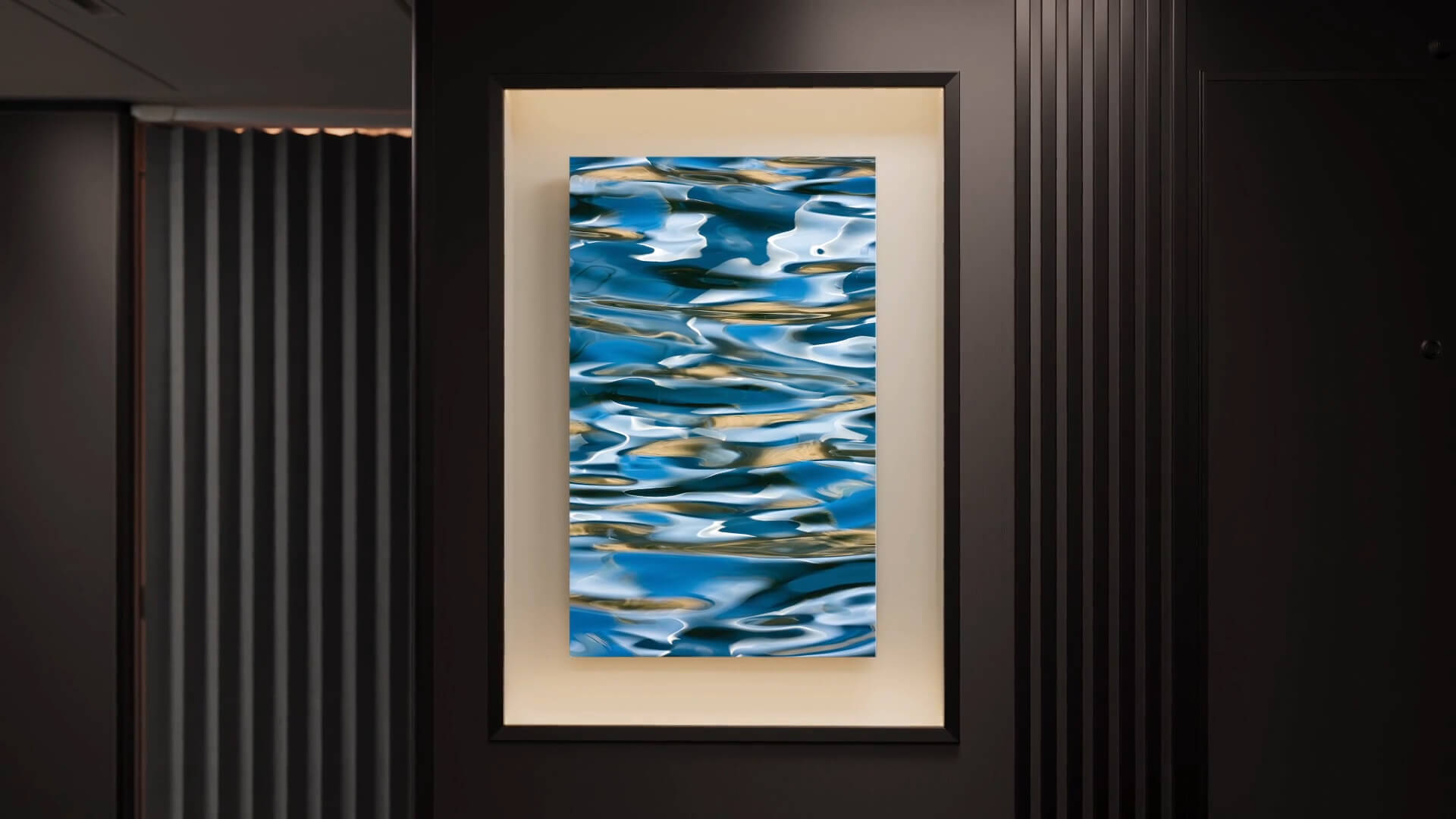
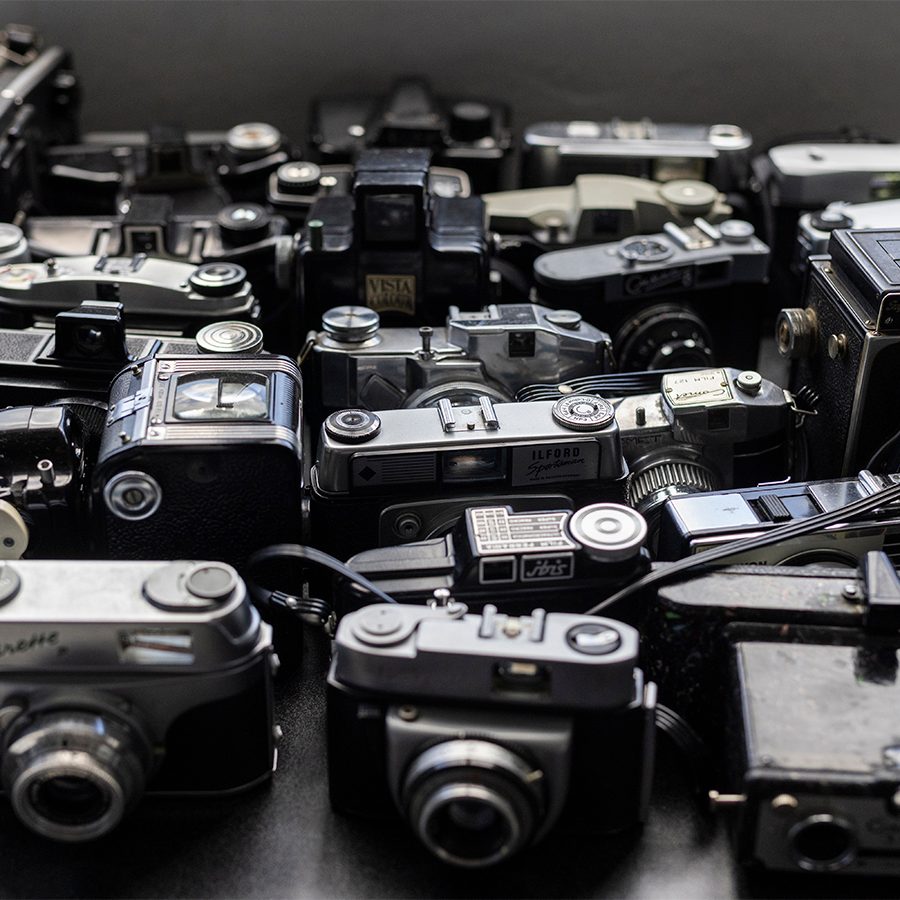
Credit: Mike Pickles
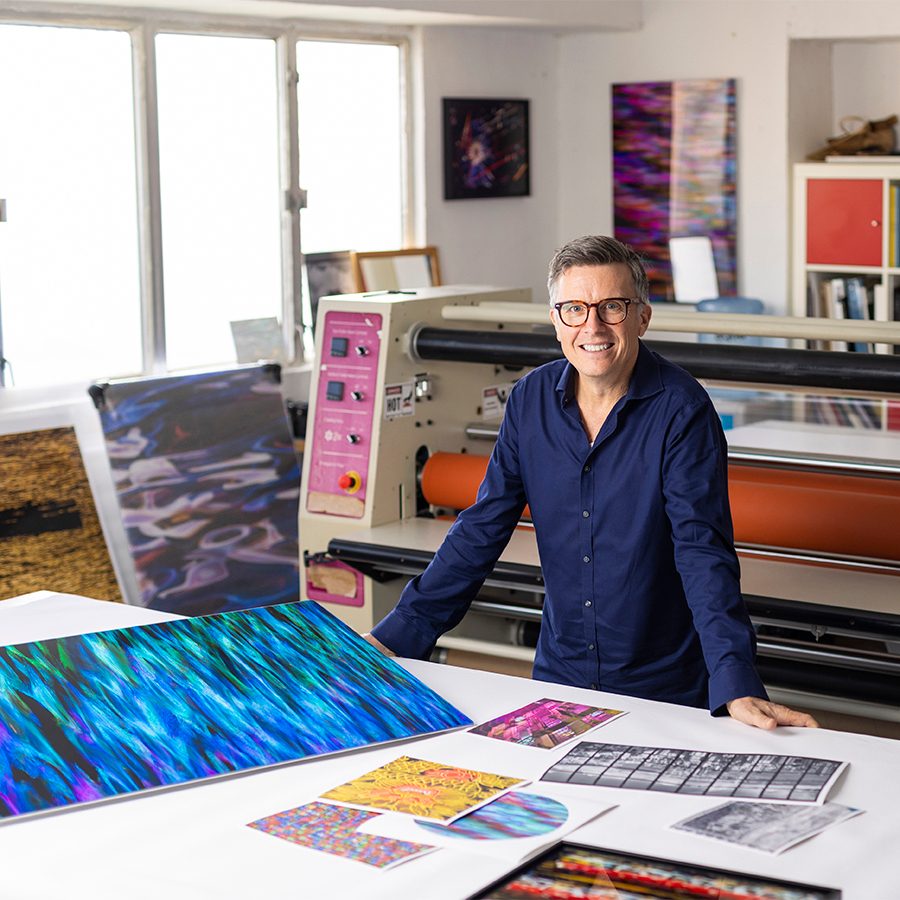
Credit: Mike Pickles
His love of photography started long before the move. A fifteen-year-old Furniss, armed with a hand-me-down camera from his father, would take snaps of family, friends and pets. Then he got his hands on one of his mother’s Vogue magazines. “It was the era of supermodels and superstar photographers, and everything looked fabulous and glamorous,” says Furniss. “I was like, ‘I want to be a photographer; this looks like it could be a lot of fun’.”
His adopted home became a source of inspiration. “Hong Kong, ever evolving, has become my favourite subject,” Furniss says, having spent the past three decades documenting the city and its changing landscape. Grid System , Furniss’s twenty-year project, depicts the mechanics of city life through enlarged contact sheets of analogue film. His photographic book Queen’s Road West, The Vanishing Neighbourhood documents the street and its inhabitants for posterity. And in Liquid Metropolis, Furniss focuses on what he says is one of Hong Kong’s most important elements: water.
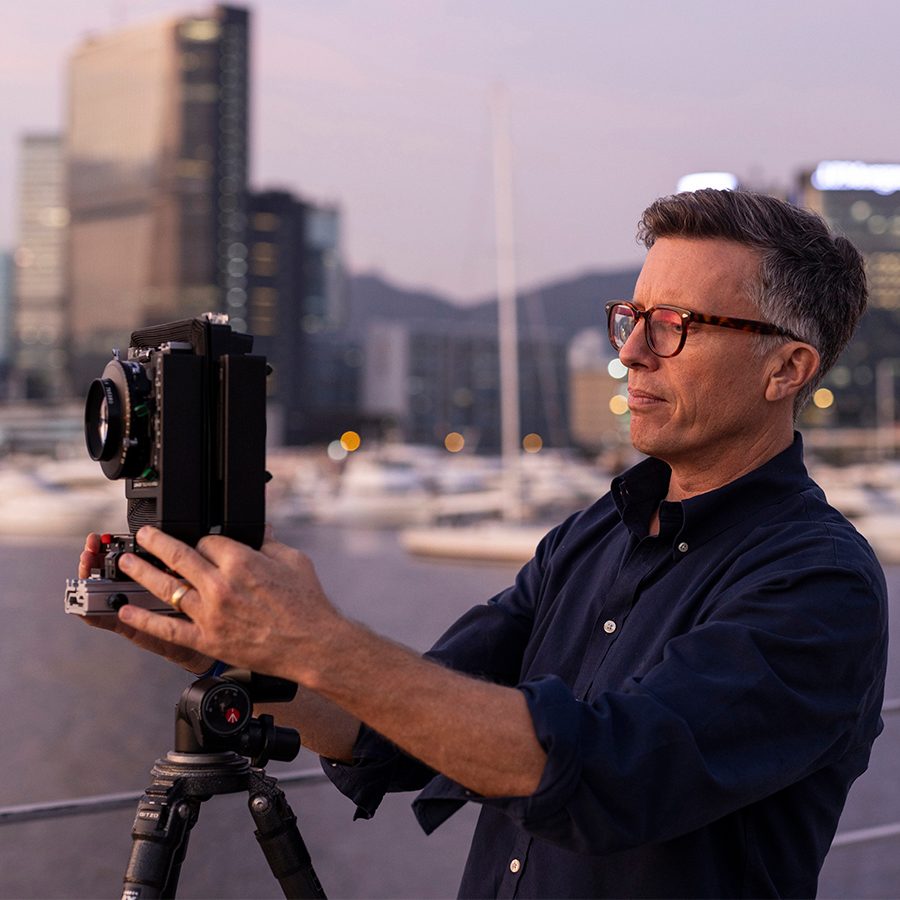
Credit: Mike Pickles
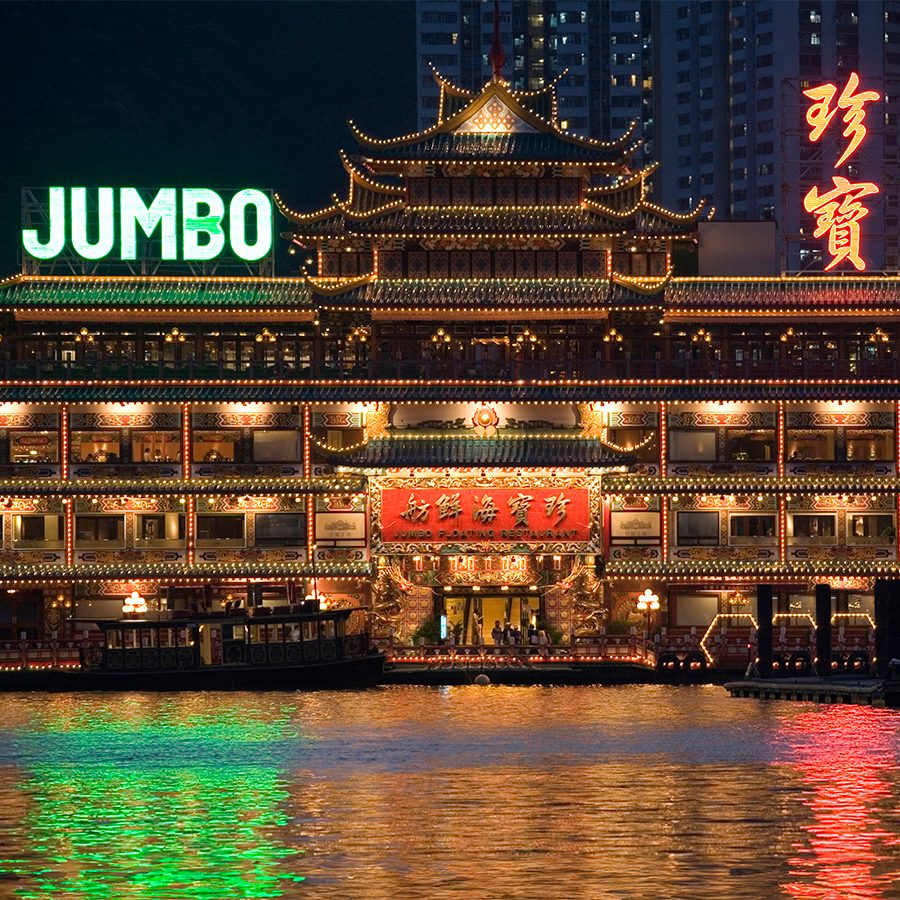
Credit: SteveAllenPhoto/Getty Images
“Water defines the existence of most cities,” says Furniss. “It connects everybody. It can be anywhere at any time, which is, you know, quite a cool concept.” While water creates it’s also an agent of entropy – a dichotomy that Furniss wants to capture in each of his photographs.
The Liquid Metropolis series was inspired by a visit to the old Jumbo Floating Restaurant in Aberdeen Harbour. On a ferry to the restaurant, Furniss looked back at the reflection of the pier’s neon dragon sign distorted in the boat’s wake, a whirlpool of red and yellow. “I thought, ‘That is absolutely beautiful, how can I photograph this?’,” he says.
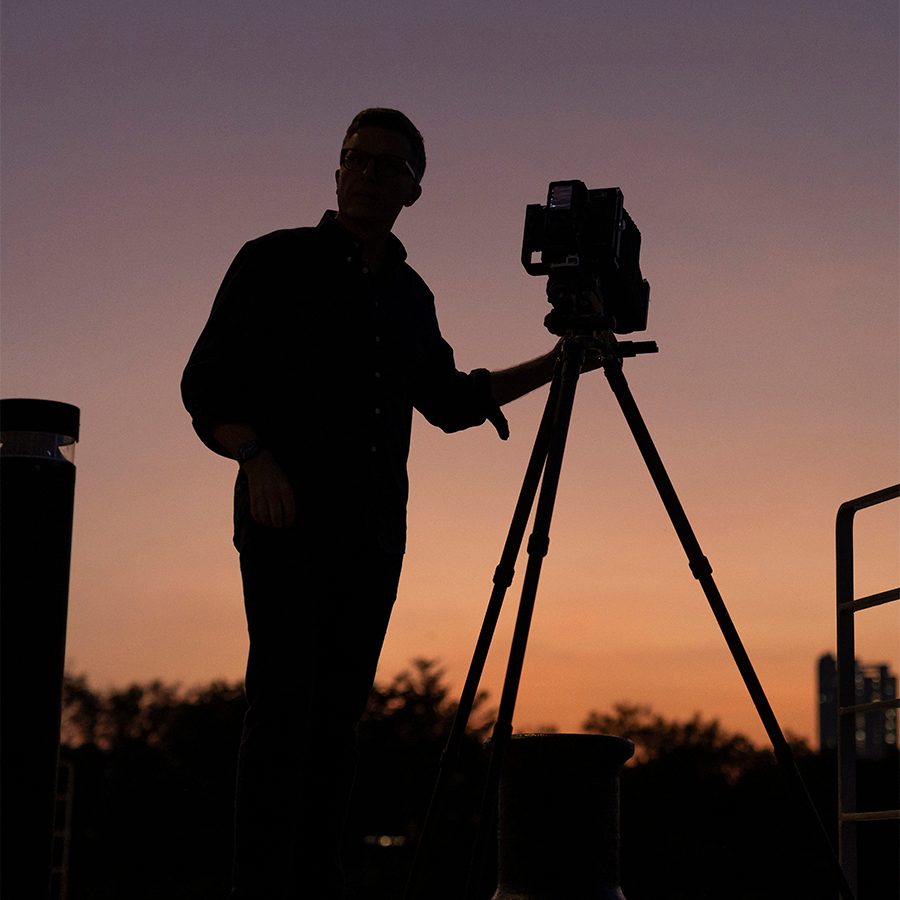
Credit: Mike Pickles
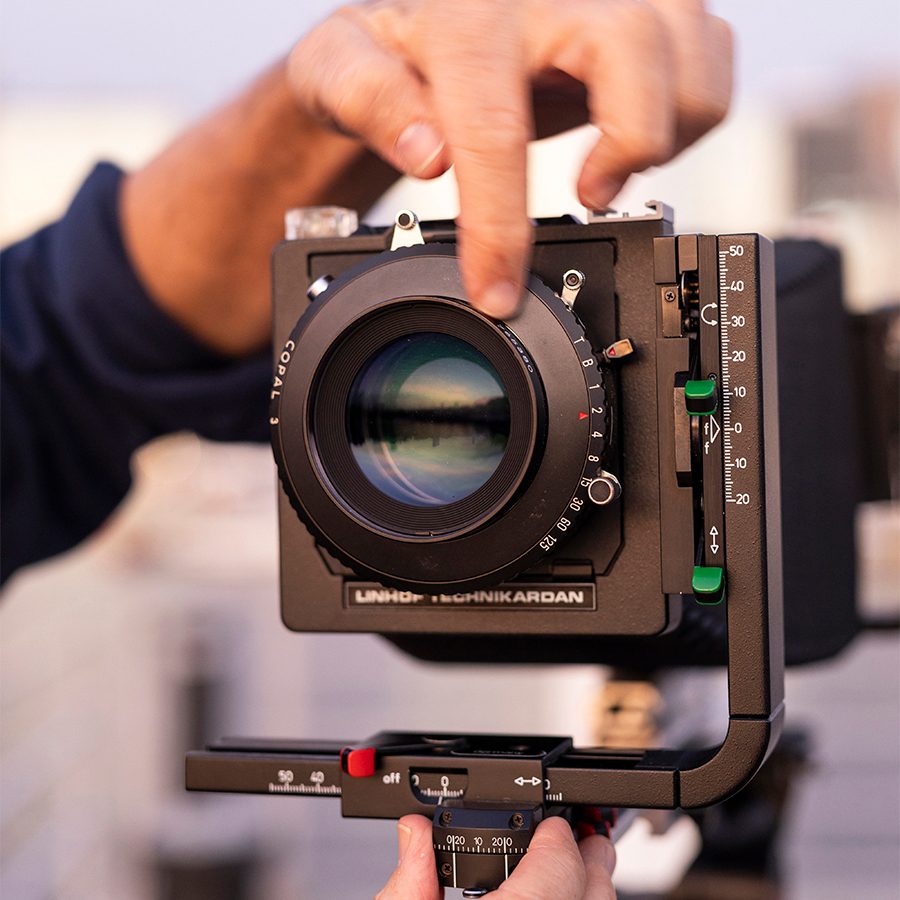
Credit: Mike Pickles
In that moment, capturing the swirling neon reflections would have proved difficult – mostly because analogue film’s sensitivity, clarity and resolution just weren’t there. The rise of digital cameras, however, offered a new approach. "I started experimenting, finding a technical solution that would allow me to solve this puzzle,” he says. The solution involved wedding an analogue Linhof Technikardan to a full-frame digital camera. The analogue component allows greater control over his plane of focus, while the digital sensor enables Furniss to capture photos at night in a way that wasn’t possible with typical film technology.
Adjusting the camera, he explains his shooting process. “I am tuning my shutter speed to the kind of frequency and amplitude of the waves, if you will,” he says. “The waves are like switches, they either reflect the light towards you or not. So, you want to get the shutter speed just where you want it to be to create a beautiful and abstract impression of the surface of the water.”
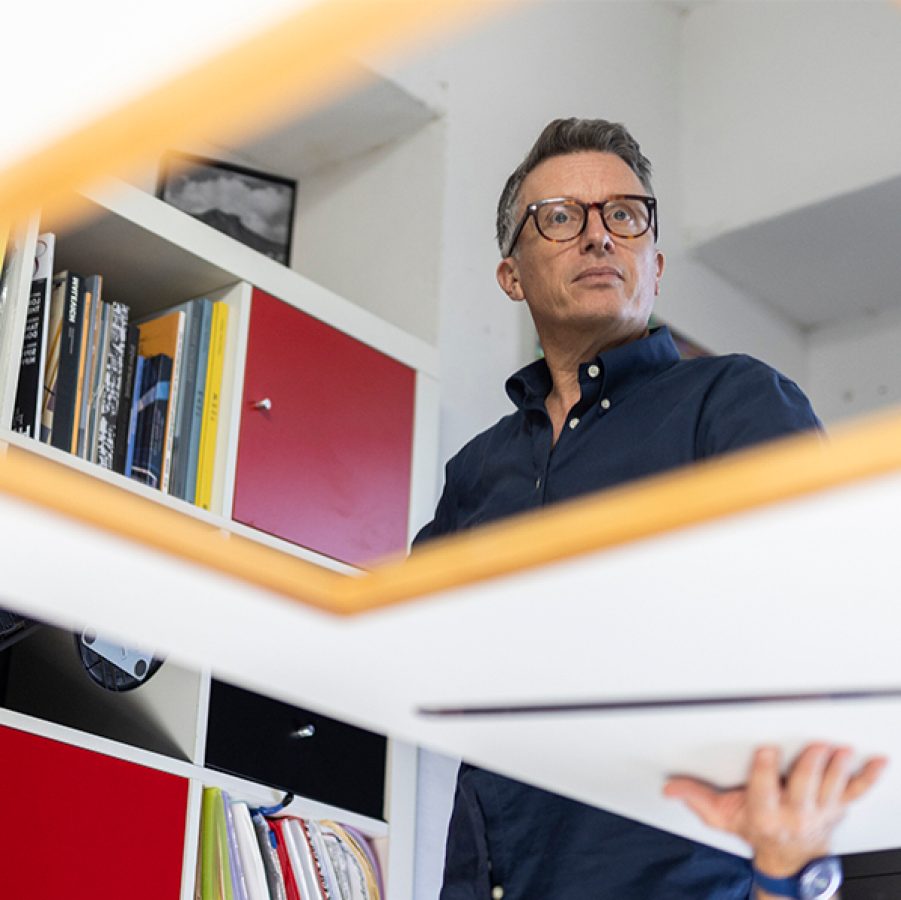
Credit: Mike Pickles
The result is deeply conceptual, but also calmingly familiar. “When you look at my work, you see a ton of potential outcomes on the surface of that water,” he says. “That's just one moment in time, but a whole continuous stream of things is happening before and after. And I think that really parallels the city experience. That's what I'm looking to bring out in the work.”
While Furniss has travelled the world documenting city reflections – from the docks in London's East End to the banks of New York's Hudson River – Hong Kong continues to be his greatest source of inspiration, responsible for the greatest wealth of images.
“Hong Kong inspires me because it's never finished,” he says. “When you go on holiday, you arrive in a new place you've never been to before, and all you want to do is take photographs. And usually, when you live in a place, you get to a point where you're satisfied, you've seen everything you've been there, you've done that.”
“In Hong Kong, you’re never satisfied – there is always something new to catch your attention. And that's what's so wonderful about it. I never fail to be amazed at the way the city evolves and keeps me interested.”
More inspiration
- China – the Chinese Mainland, Hong Kong SAR, Macao SAR and Taiwan Region
- Hong Kong SAR - English
- Chinese Mainland (China) - English
- Taiwan, China - English
- 香港特別行政區 - 繁體中文
- 中国內地 - 简体中文
- 中國台灣 - 繁體中文
- Africa
- South Africa - English
- Asia
- Bangladesh - English
- Korea - English
- Singapore - English
- Cambodia - English
- 한국 - 한국어
- Sri Lanka - English
- India - English
- Malaysia - English
- Thailand - English
- Indonesia - English
- Maldives - English
- ประเทศไทย - ภาษาไทย
- Indonesia - Bahasa Indonesia
- Myanmar - English
- Vietnam - English
- Japan - English
- Nepal - English
- Việt Nam - tiếng Việt
- 日本 - 日本語
- Philippines - English
- Australasia
- Australia - English
- New Zealand - English